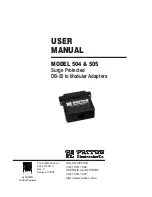
Interface Configuration
7710 SR OS Interface Configuration Guide
Page 213
slope a packet is associated with. A queue that has not exceeded its MBS size is not guaranteed that a buffer
will be available when needed or that the packets RED slope will not force the discard of the packet. Setting
proper CBS parameters and controlling CBS oversubscription is one major safeguard to queue starvation
(when a queue does not receive its fair share of buffers). Another is properly setting the RED slope parame-
ters for the needs of services on this port or channel.
If the CBS value is larger than the MBS value, an error will occur, preventing the MBS change.
The
no
form of this command
returns
the MBS size assigned to the queue to the value.
Default
default
Parameters
size-in-kbytes —
The size parameter is an integer expression of the maximum number of kilobytes of
buffering allowed for the queue. For a value of 100 kbps, enter the value 100. A value of 0 causes the
queue to discard all packets.
Values
0 — 131072 or default
rate
Syntax
rate pir-rate
[
cir
cir-rate
]
no rate
Context
config>port>ethernet>access>egr>qgrp>qover>q
config>port>ethernet>access>ing>qgrp>qover>q
config>port>ethernet>network>egr>qover>q
Description
This command specifies the administrative Peak Information Rate (PIR) and the administrative Committed
Information Rate (CIR) parameters for the queue. The PIR defines the maximum rate that the queue can
transmit packets out an egress interface (for SAP egress queues). Defining a PIR does not necessarily guar-
antee that the queue can transmit at the intended rate. The actual rate sustained by the queue can be limited
by oversubscription factors or available egress bandwidth.
The CIR defines the rate at which the system prioritizes the queue over other queues competing for the same
bandwidth. In-profile packets are preferentially queued by the system at egress and at subsequent next hop
nodes where the packet can traverse. To be properly handled as in- or out-of-profile throughout the network,
the packets must be marked accordingly for profiling at each hop.
The CIR can be used by the queue’s parent commands
cir-level
and
cir-weight
parameters to define the
amount of bandwidth considered to be committed for the child queue during bandwidth allocation by the
parent scheduler.
The
rate
command can be executed at anytime, altering the PIR and CIR rates for all queues created through
the association of the SAP egress QoS policy with the
queue-id
.
The
no
form of the command returns all queues created with the
queue-id
by association with the QoS pol-
icy to the default PIR and CIR parameters (
max
, 0).
Default
rate max cir 0 —
The
max
default specifies the amount of bandwidth in kilobits per second (thousand bits
per second). The
max
value is mutually exclusive to the
pir-rate
value.
Parameters
pir-rate —
Defines the administrative PIR rate, in kilobits, for the queue. When the
rate
command is
executed, a valid PIR setting must be explicitly defined. When the
rate
command has not been
Содержание 7710 SR SONET
Страница 6: ...Page 6 7710 SR OS Interface Configuration Guide Table of Contents...
Страница 8: ...Page 8 7710 SR OS Interface Configuration Guide List of Tables...
Страница 10: ...Page 10 7710 SR OS Interface Configuration Guide List of Figures...
Страница 14: ...Preface Page 14 7710 SR OS Interface Configuration Guide...
Страница 16: ...Getting Started Page 16 7710 SR OS Interface Configuration Guide...
Страница 18: ...Page 18 7710 SR OS Interface Configuration Guide Configuration Notes on page 107...
Страница 166: ...Service Management Tasks Page 152 7710 SR OS Interface Configuration Guide...
Страница 354: ...Multi Chassis Redundancy Commands Page 328 7710 SR OS Interface Configuration Guide...
Страница 494: ...Standards and Protocols Page 494 Standards and Protocols...
Страница 496: ...Index Page 496 7710 SR OS Interface Configuration Guide...
















































